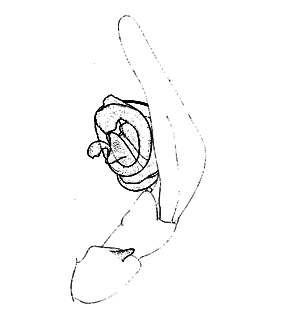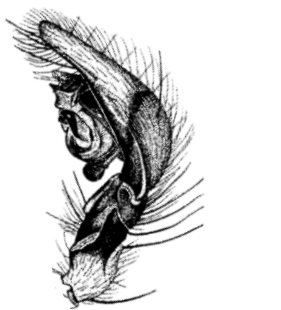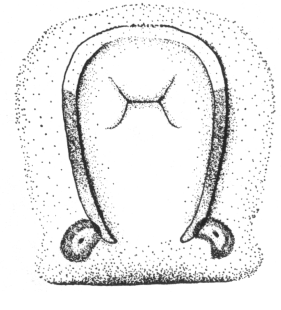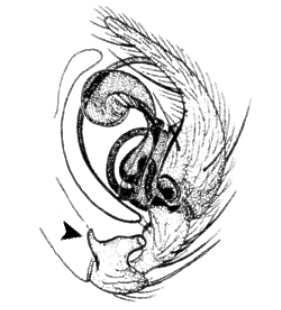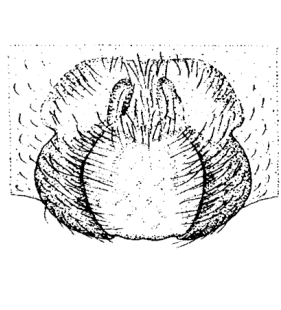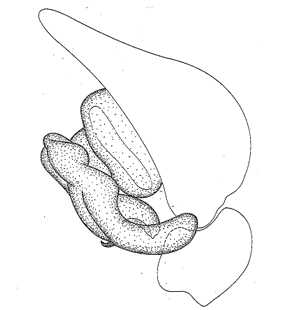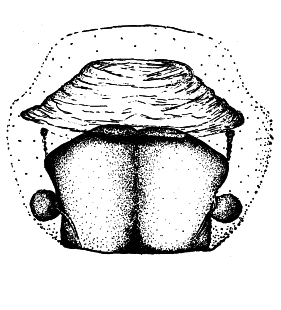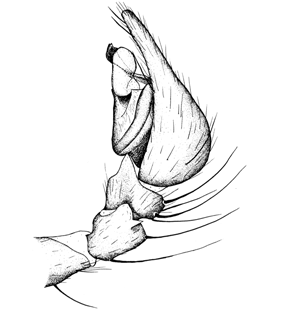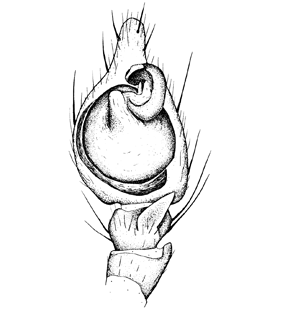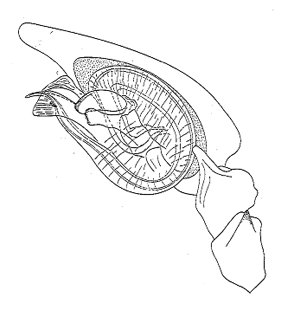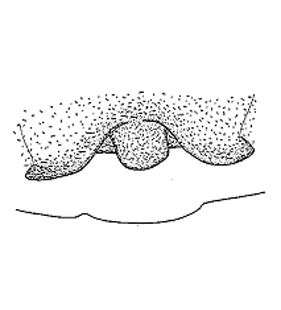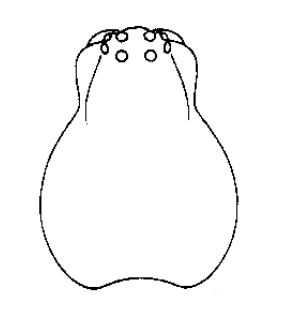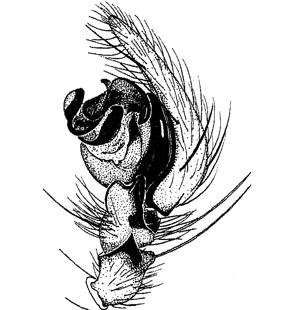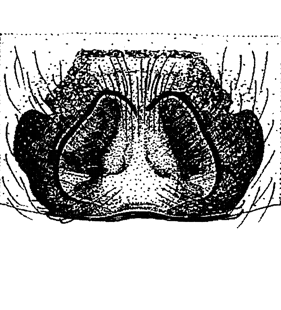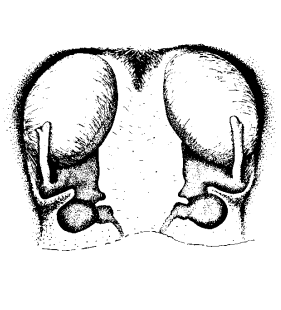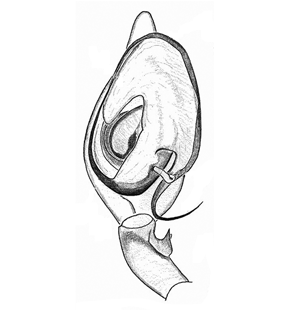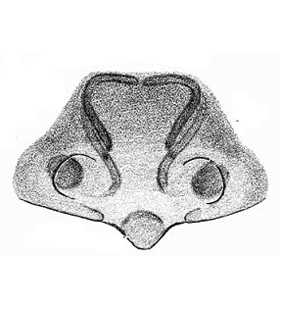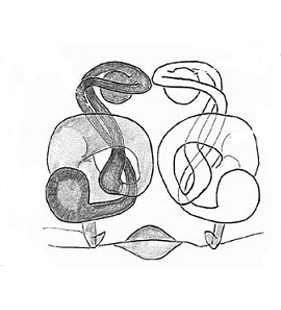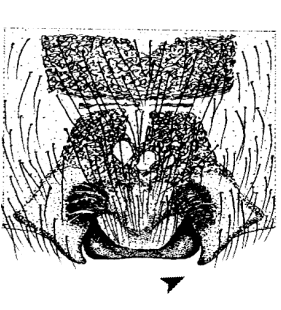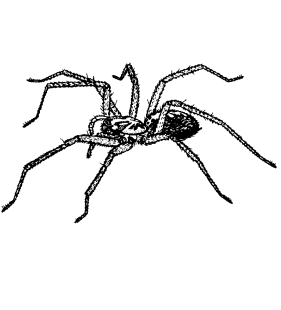Familie Agelenidae C. L. Koch, 1837
Schlüssel nicht vollständig. Weitere Gattungen sind am Ende aufgelistet. |
Für Fehlermeldungen oder Verbesserungsvorschläge bitte Link folgen: click
|
|||||||
| 1 |
Prosoma im Augenbereich nicht viel schmäler als dahinter, Spinnen mit relativ kräftigen Beinen, männlicher Pedipalpus mit Patellarapophyse (fehlt bei Inermocoelotes), Cymbium mit seitlicher Furche, Weibchen bei den meisten Arten mit ausgeprägten Epigynenzähnen vor oder seitlich der Einführöffnung |
|||||||
| - | Prosoma im Augenbereich deutlich schmäler als dahinter, Spinnen mit relativ langen, schlanken Beinen, männlicher Pedipalpus selten mit Patellarapophyse, Cymbium nie mit seitlicher Furche, wenn Epigyne mit Epigynenzähnen, dann sind diese kleiner und anders als oben beschrieben |
|||||||
| 2 (1) |
Patellarapophyse fehlt, vorderer Atriumrand der Epigyne ohne Erweiterung nach hinten |
| ||||||
| - | Patellarapophyse vorhanden, vorderer Atriumrand der Epigyne mit Erweiterung nach hinten |
|||||||
| 3 (2) |
Konduktor stark verbreitert, breit und flach, spiralförmig mit ein bis zwei Umgängen, Atrium der Epigyne gross |
| ||||||
| - | Konduktor kurz, Atrium der Epigyne klein |
|||||||
| 4 (3) |
Patellarapophyse breit, Embolus schlank, Epigynenzähne von normaler Länge, Einführgang kurz |
| ||||||
| - | Patellarapophyse schlank; Embolus breit, Epigynenzähne stark verlängert, Einführgang lang |
| ||||||
| 5 (1) |
Trochanter III und IV eingekerbt |
|||||||
| - | Alle Trochanter gerade oder nur leicht gebogen |
|||||||
| 6 (5) |
Dorsale und laterale Stacheln auf Patellae III und IV, Tarsus IV mit 1–2 ventralen Stacheln |
|||||||
| - | Nur dorsale Stacheln auf allen Patellae |
|||||||
| 7 (6) |
Colulus eine Platte, die median nur leicht geteilt ist, manchmal nur 2 behaarte Platten sichtbar, männlicher Pedipalpus manchmal mit Patellarapophyse, Medianapophyse fehlt |
| ||||||
| - | Colulus stark reduziert, nur noch einige Haare sichtbar, männlicher Pedipalpus ohne Patellarapophyse, Medianapophyse vorhanden |
|||||||
| 8 (7) |
Augen normal entwickelt, Tarsen mit weniger als 7 dorsalen Trichobothrien, hinterer Klauenfurchenrand der Cheliceren mit ein oder zwei grossen und mehreren kleinen Zähnen |
|||||||
| - | Augen sehr klein oder fehlend, Tarsen mit 7 oder mehr dorsalen Trichobothrien, hinterer Klauenfurchenrand der Cheliceren mit mehreren gleichlangen Zähnen |
|||||||
| 9 (5) |
Hintere Augenreihe bei dorsaler Sicht stark rekurv oder prokurv, vordere Augenreihe bei frontaler Sicht entweder stark prokurv oder leicht rekurv, Patellae I und II mit dorsalen und prolateralen Stacheln, Colulus deutlich geteilt in 2 behaarte Platten |
|||||||
| - | Beide Augenreihen bei frontaler und dorsaler Sicht mehr oder weniger gerade (Augen können reduziert sein), Patellae nur mit dorsalen Stacheln, Colulus eine trapezförmige Platte mit geradem distalem Rand, w-förmig oder mit Einkerbung |
|||||||
| 10 (1) |
Augenreihen bei dorsaler Sicht rekurv, die hinteren Mittelaugen am grössten, Federhaare fehlen oder auffällig anders als die Haare bei Tegenaria sensu lato |
|||||||
| - | Augenreihen bei dorsaler Sicht prokurv, die hinteren Mittelaugen nie am grössten, mit typischen Federhaaren |
|||||||
| 11 (10) |
Konduktor am männlichen Palpus mit auffälligem laterodorsalem Vorsprung, Femur des männlichen Palpus mit einem flachen aber auffälligem Vorsprung, ohne Patellarapophyse, Epigyne mit grossem Atrium |
| ||||||
| - | Konduktor am männlichen Palpus ohne auffälligen laterodorsalen Vorsprung, keine Femoralapophyse, Patellarapophysis manchmal vorhanden, Epigyne mit nach hinten vorstehenden Taschen oder leicht erhabenem mittleren Teil |
|||||||
| 12 (11) |
Konduktor einfach, weder Medianapophyse noch Patellarapophyse, Epigyne mit nach hinten reichenden Taschen |
| ||||||
| - | Konduktor komplexer, Medianapophyse und Patellarapophyse vorhanden, Epigyne mit leicht erhöhtem mittleren Bereich |
| ||||||
| 13 (10) |
Analtuberkel ohne ausgeprägte Dornen, Konduktor helikal und stark vorragend, Epigynenplatte mit 2 deutlich getrennten Einführöffnungen |
| ||||||
| - | Analtuberkel mit deutlichen, langen, dunklen Dornen, Konduktor unterschiedlich geformt, aber nie helikal, Epigynenplatte nicht völlig längsgeteilt |
|||||||
| 14 (13) |
Embolus dünn und filamentös, Konduktor einfach, vorderer Rand des Atriums der Epigyne mit vorstehendem Scapus |
| ||||||
| - | Embolus entweder breit und kurz oder mit Membran spiralig verlängert, Konduktor komplex, vorderer Rand des Atriums der Epigyne ohne Scapus |
|||||||
| 15 (14) |
Patella ohne Auswuchs, 2 Tibialapophysen, Embolus kurz und breit, Vulva mit einem im Inneren entstehenden Spermathekenkopf, Spermatheken-Apophysen vorhanden |
| ||||||
| - | Patellarauswuchs mit langem Stachel, eine Tibialapophyse, Embolus lang und mit spiraliger Membran, Vulva mit lateral oder median entstehendem Spermathekenkopf, keine Spermatheken-Apophysen |
| ||||||
| 16 (9) |
Ungewöhnlich langer Apex / terminales Ende des Konduktors, Epigyne und Vulva wie Abbildung |
|||||||
| - | Anders |
|||||||
| 17 (16) |
Hinterer Klauenfurchenrand der Cheliceren mit 6 oder mehr Zähnen (Zähne werden nach proximad kleiner), retrolaterale Tibialapophyse meist mit 2 Ästen, ohne lateroventralem Grat, Konduktor mit membranösem oder kräftigem (nicht stark sklerotisiertem) transversalen Grat, terminales Ende nicht zweigeteilt (Ausnahme E. montigena) mit ventralem Apex, der einen verlängerten Vorsprung bildet oder komplexer ist (mehrere Spitzen oder spiralig), Medianapophyse fest mit dem Tegulum verbunden (manchmal nur membranös), distal mit einfachem taschenförmigem Sklerit, Vulva und gewundener Gang unregelmässig sklerotisiert und/oder mit Divertikula am Einführgang (Ausnahme E. sicana mit zwei Spermatheken) |
|||||||
| - | Hinterer Klauenfurchenrand der Cheliceren mit 3 bis 6 grossen, ungleichen Zähnen, retrolaterale Tibialapophyse meist mit 3 Ästen oder stark vorstehender Ausbeulung und lateroventralem Grat, Konduktor lamelliform, manchmal mit sklerotisiertem Grat, Spitze oft zweigeteilt mit einfachem, ventralem Ende, Medianapophyse stark vorstehend mit distalem plattenartigem oder komplexerem Sklerit, Vulva nur mit gewundenem Gang oder mit mehr oder weniger regelmässig sklerotisierten rundlichen Spermatheken |
|
Weitere Gattungen
- 1. Agelenopsis
- 2. Anatextrix
- 3. Brignoliolus
- 4. Gorbiscape
- 5. Hellamalthonica
- 6. Persiscape
- 7. Pseudotegenaria



